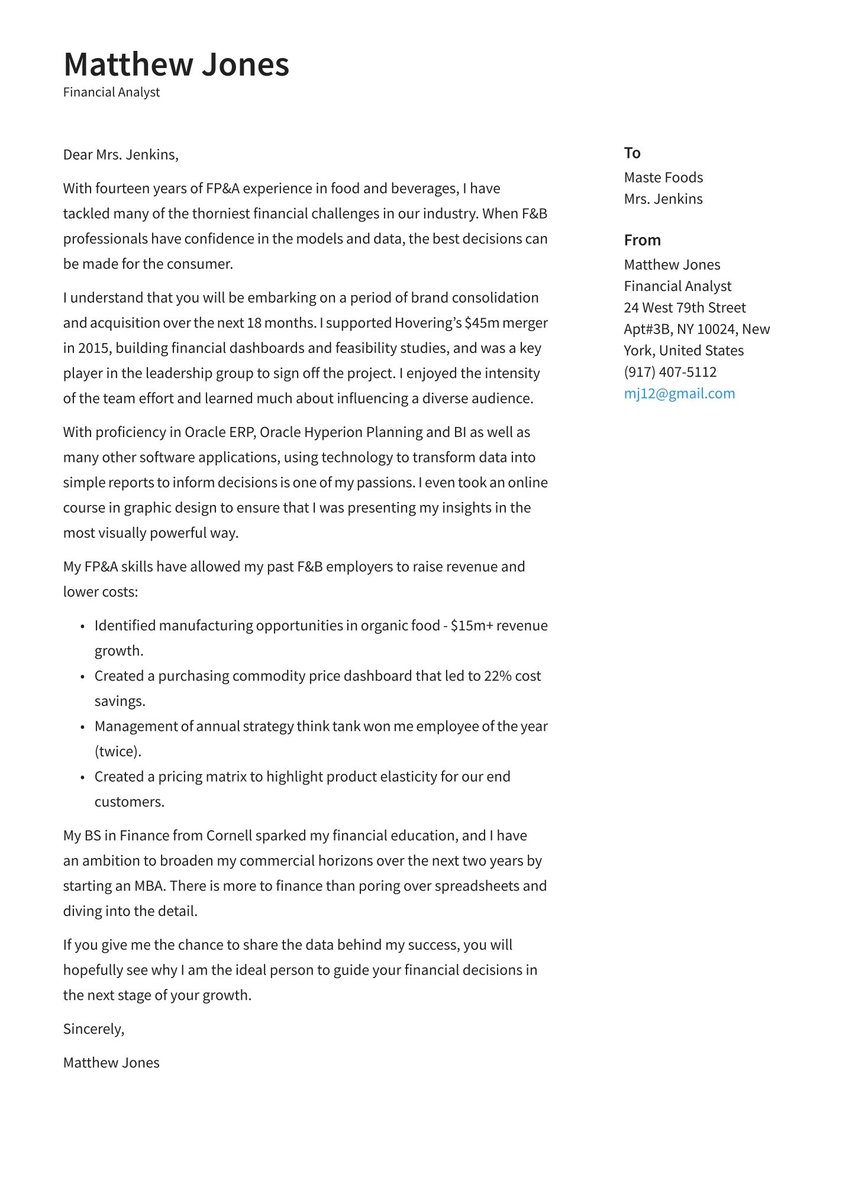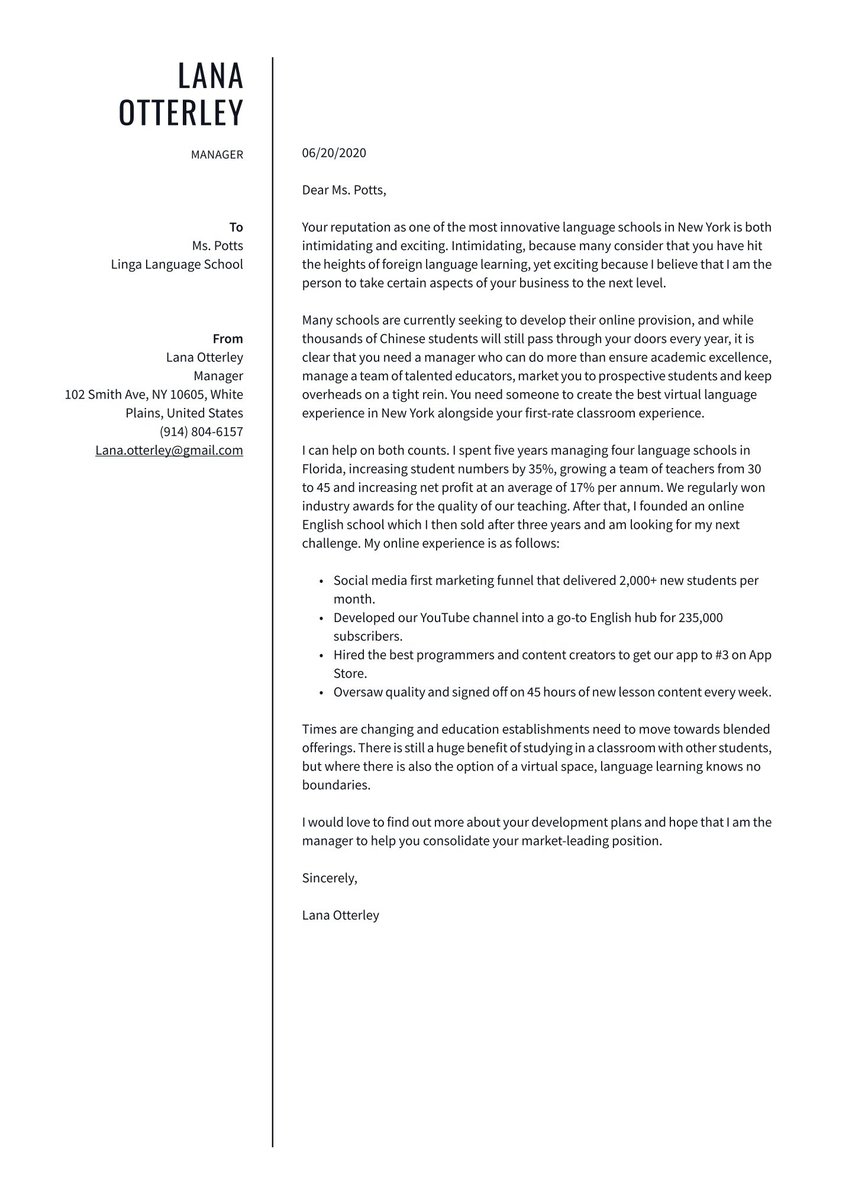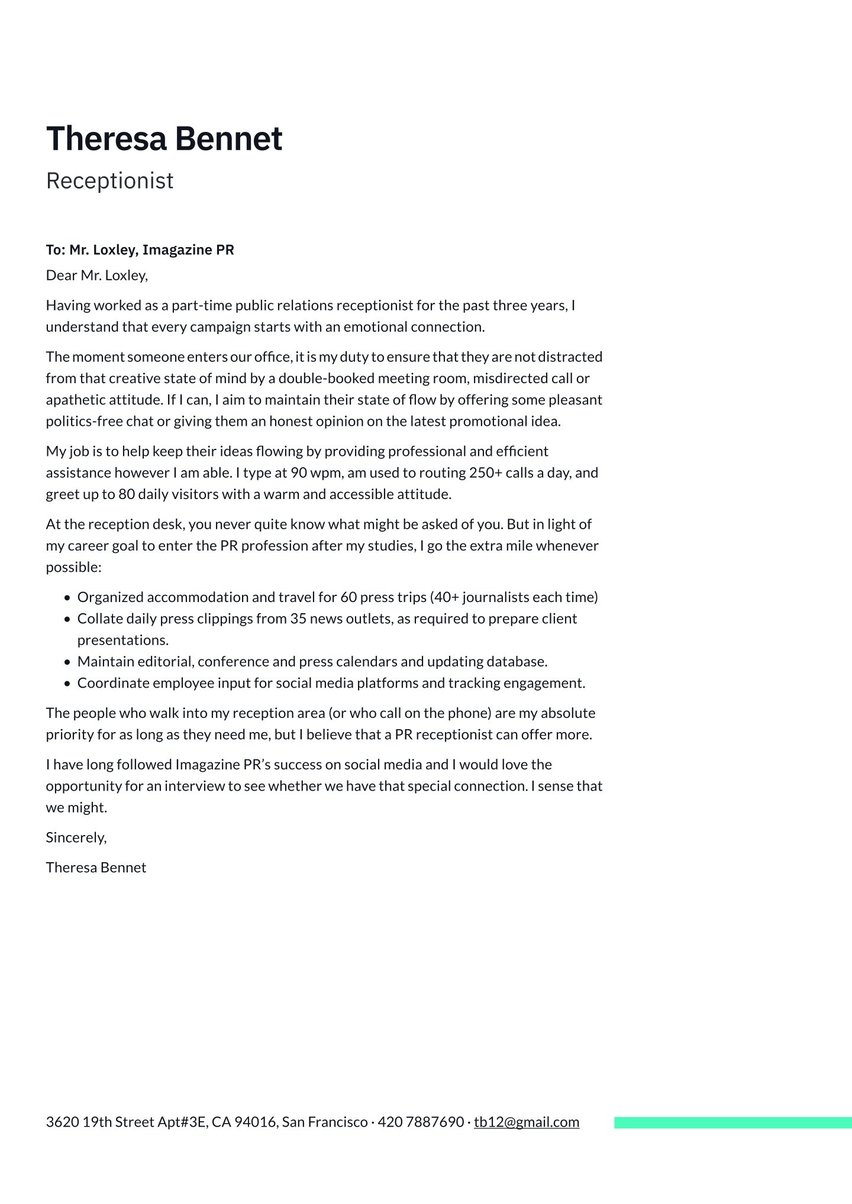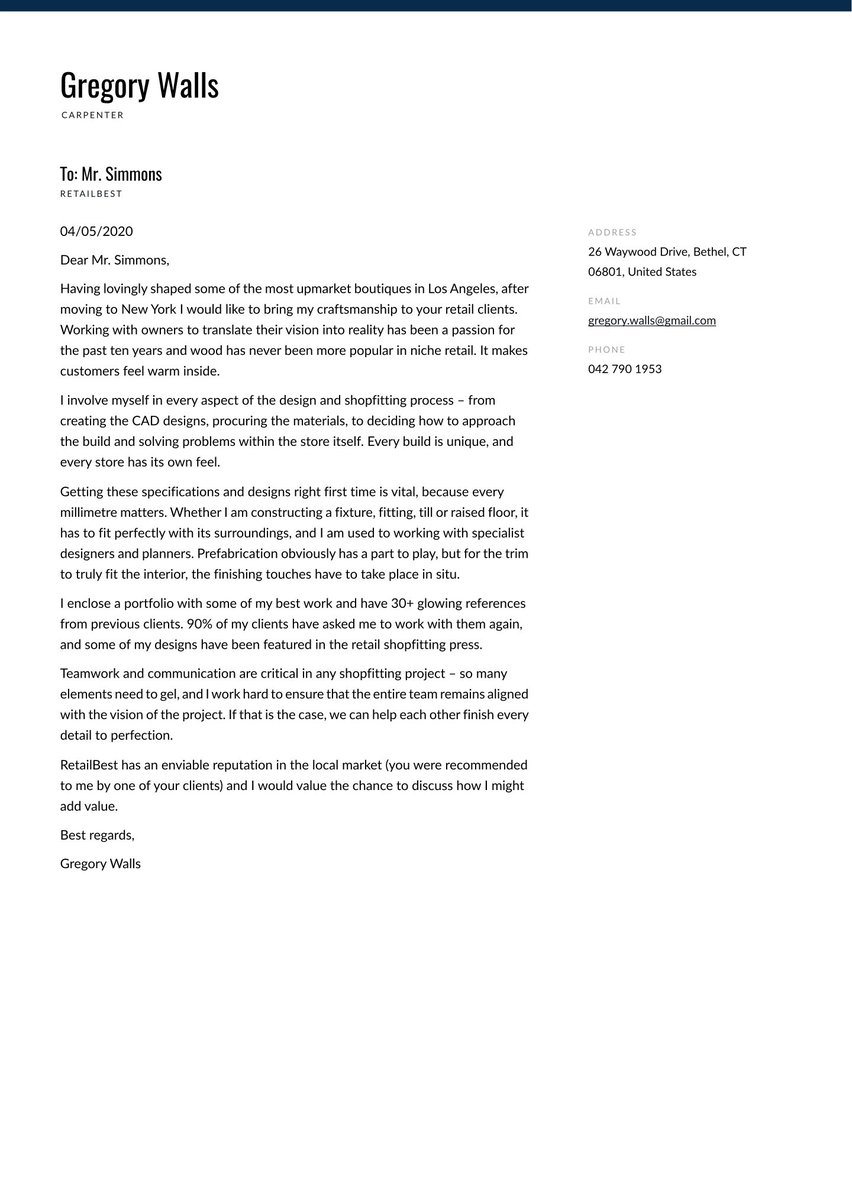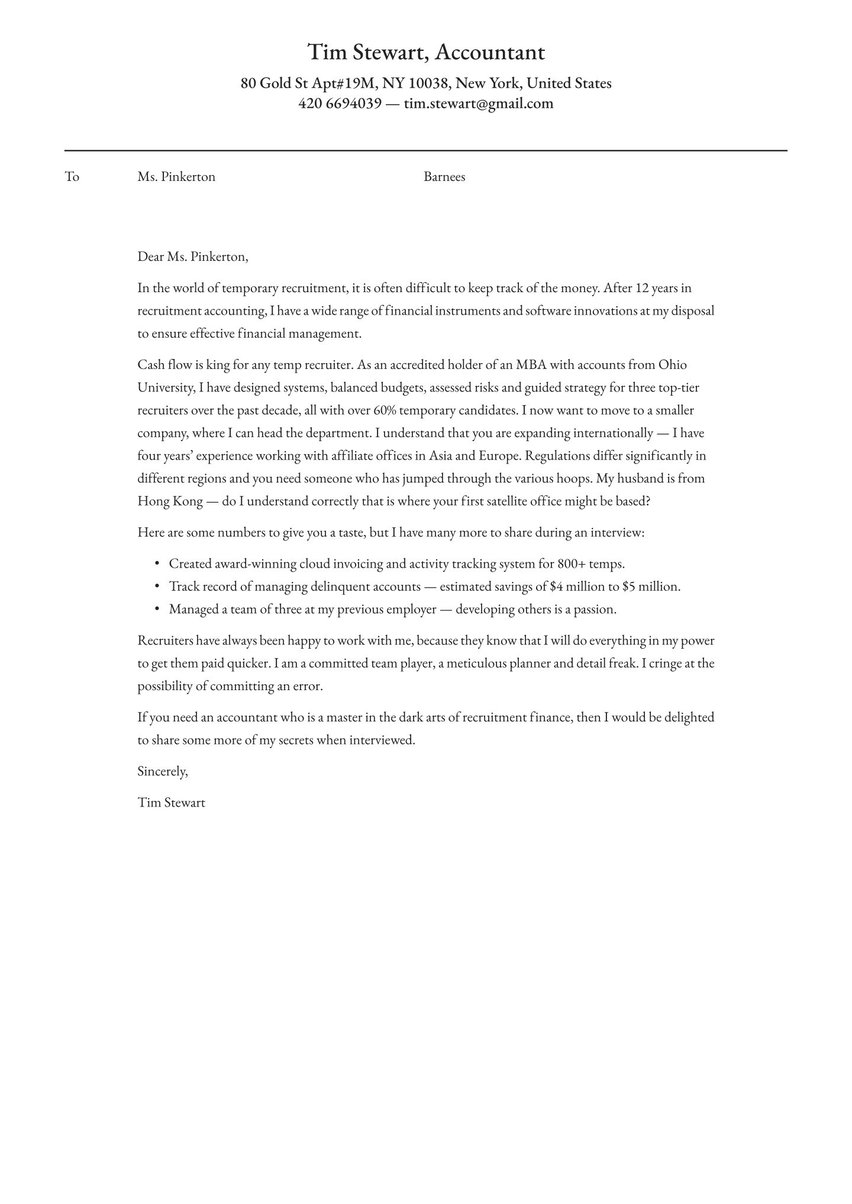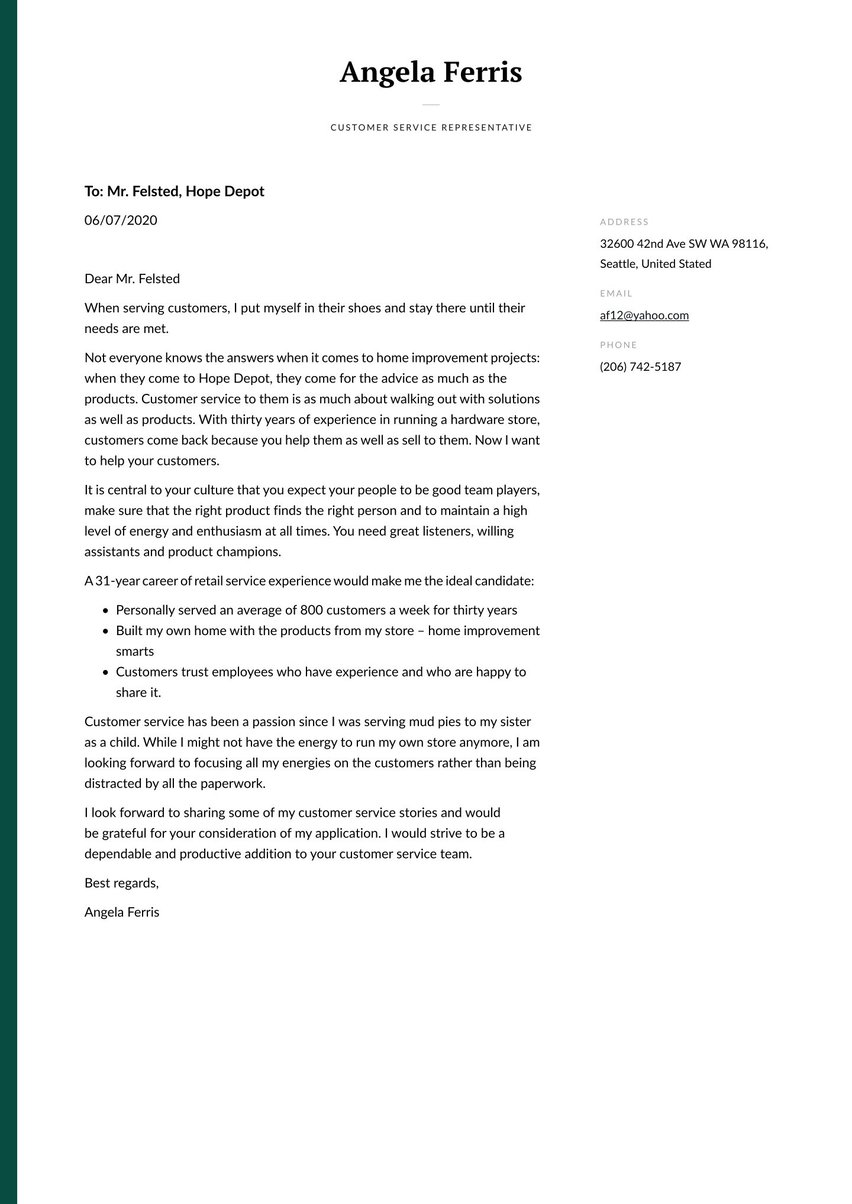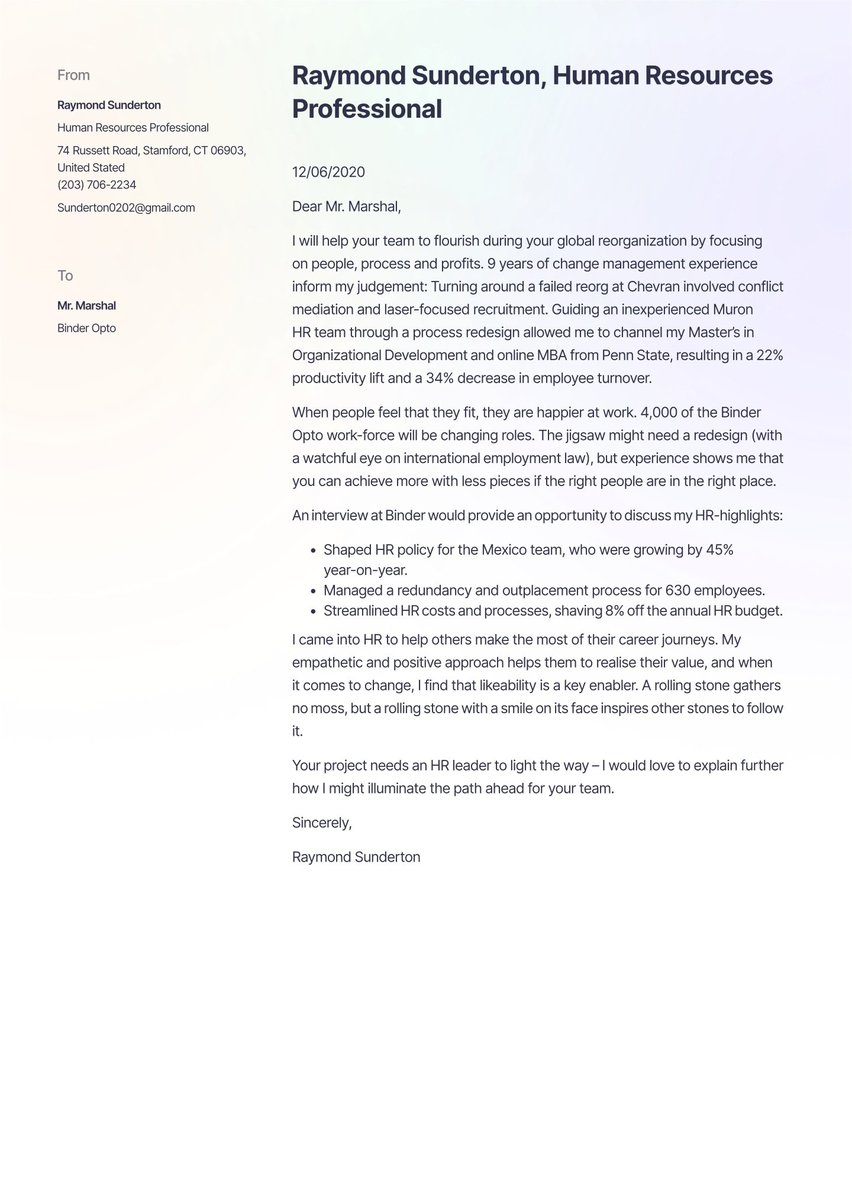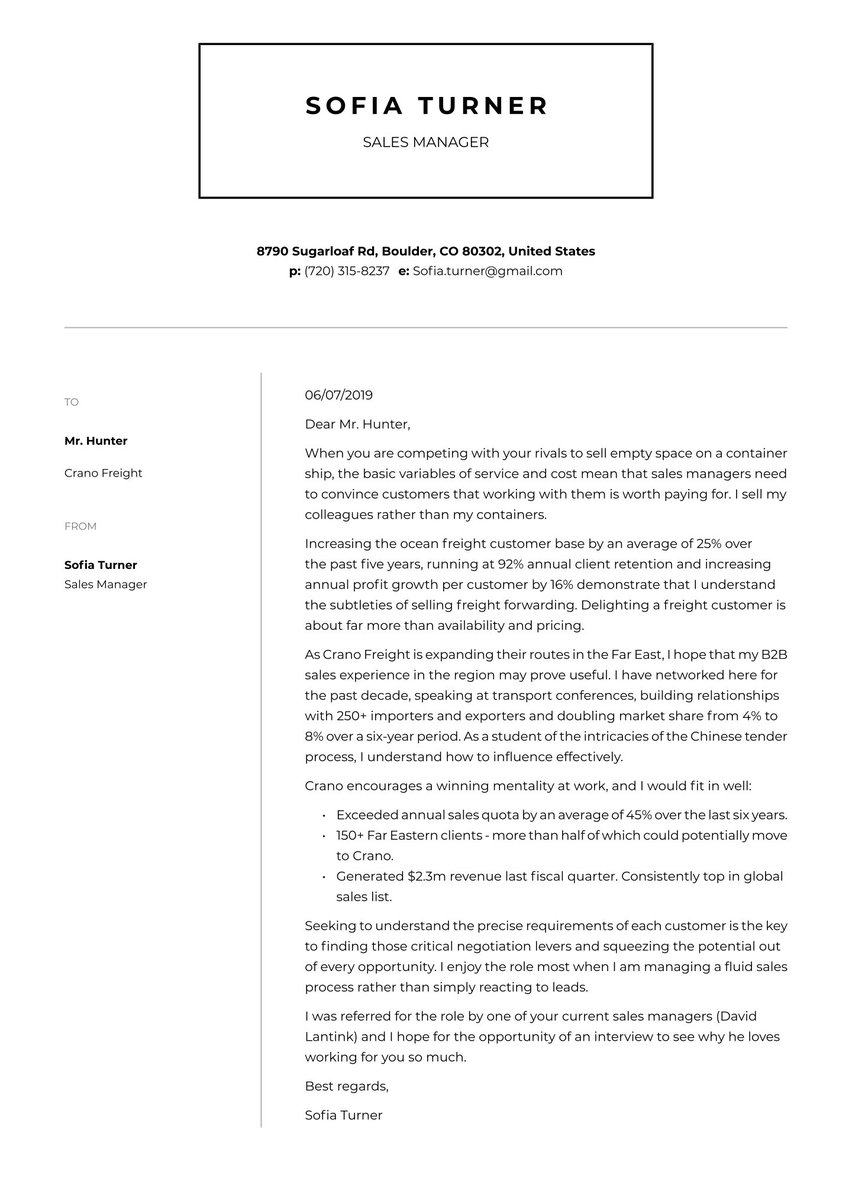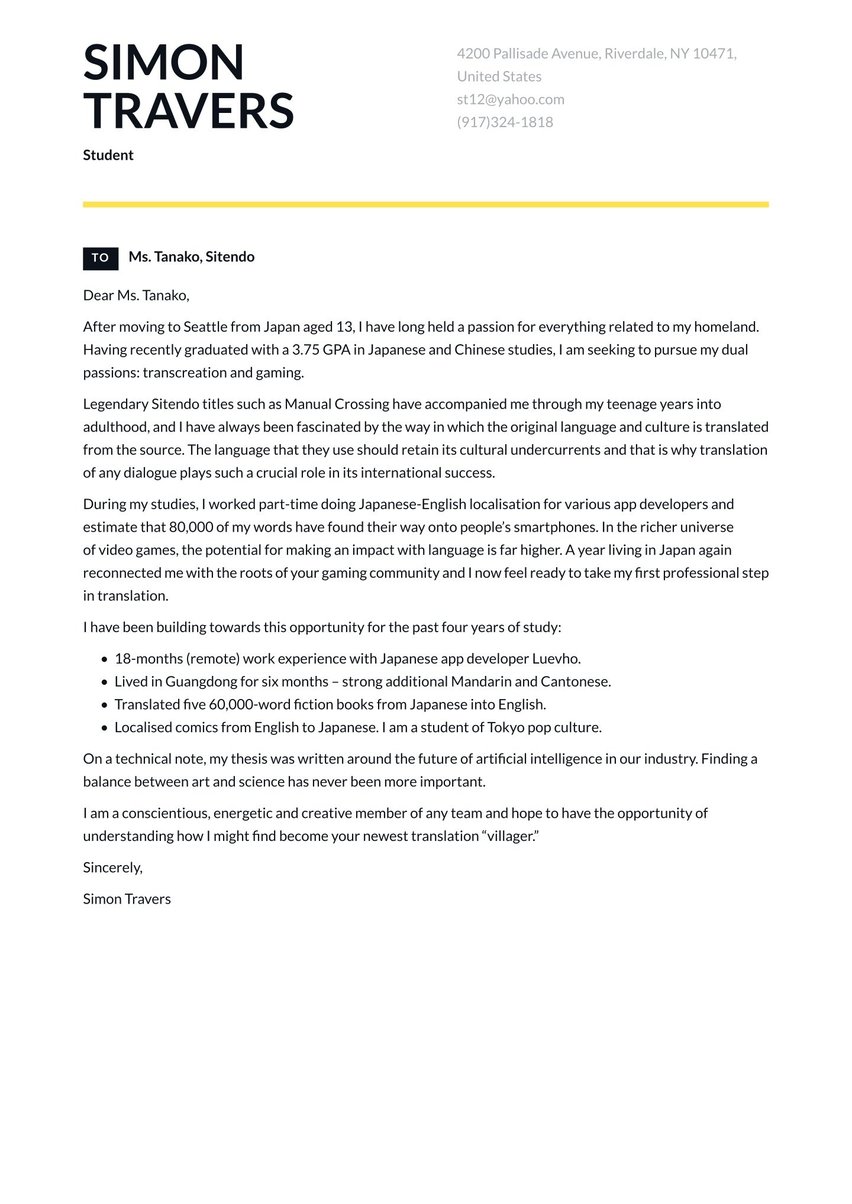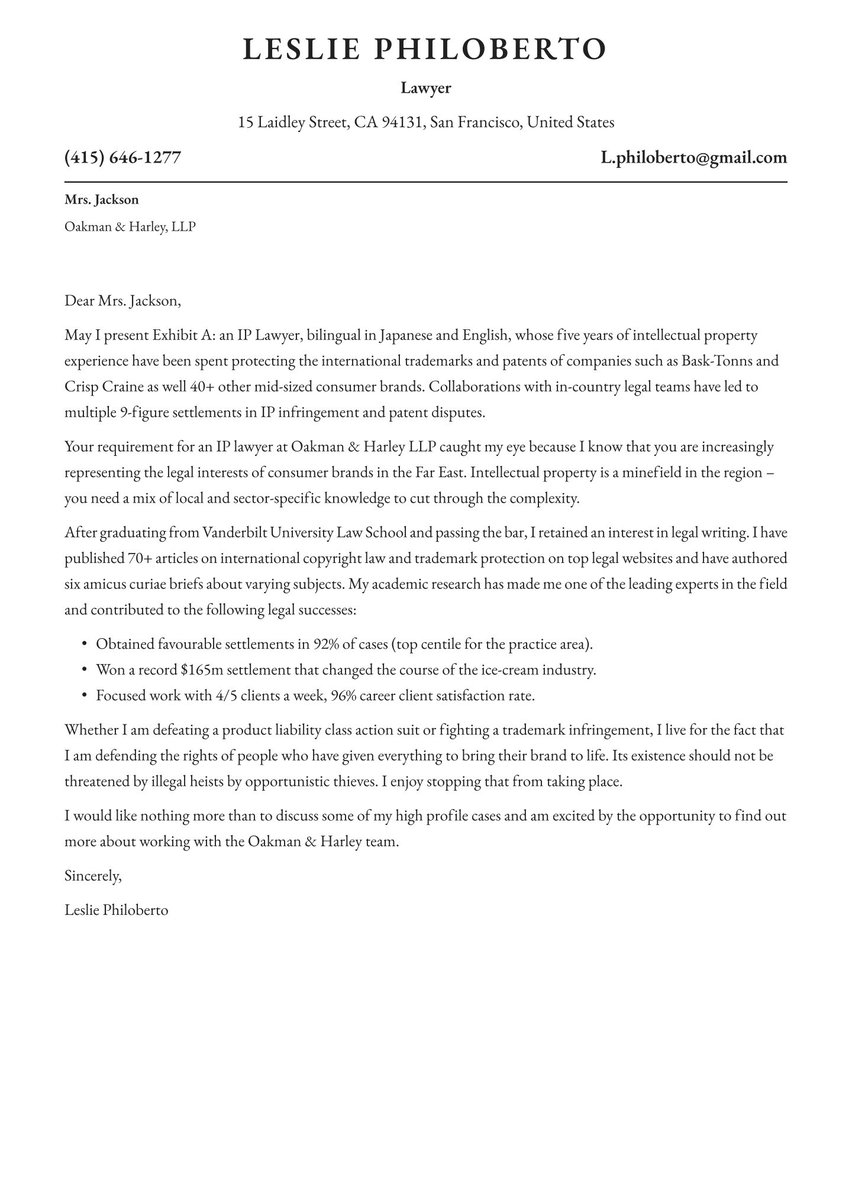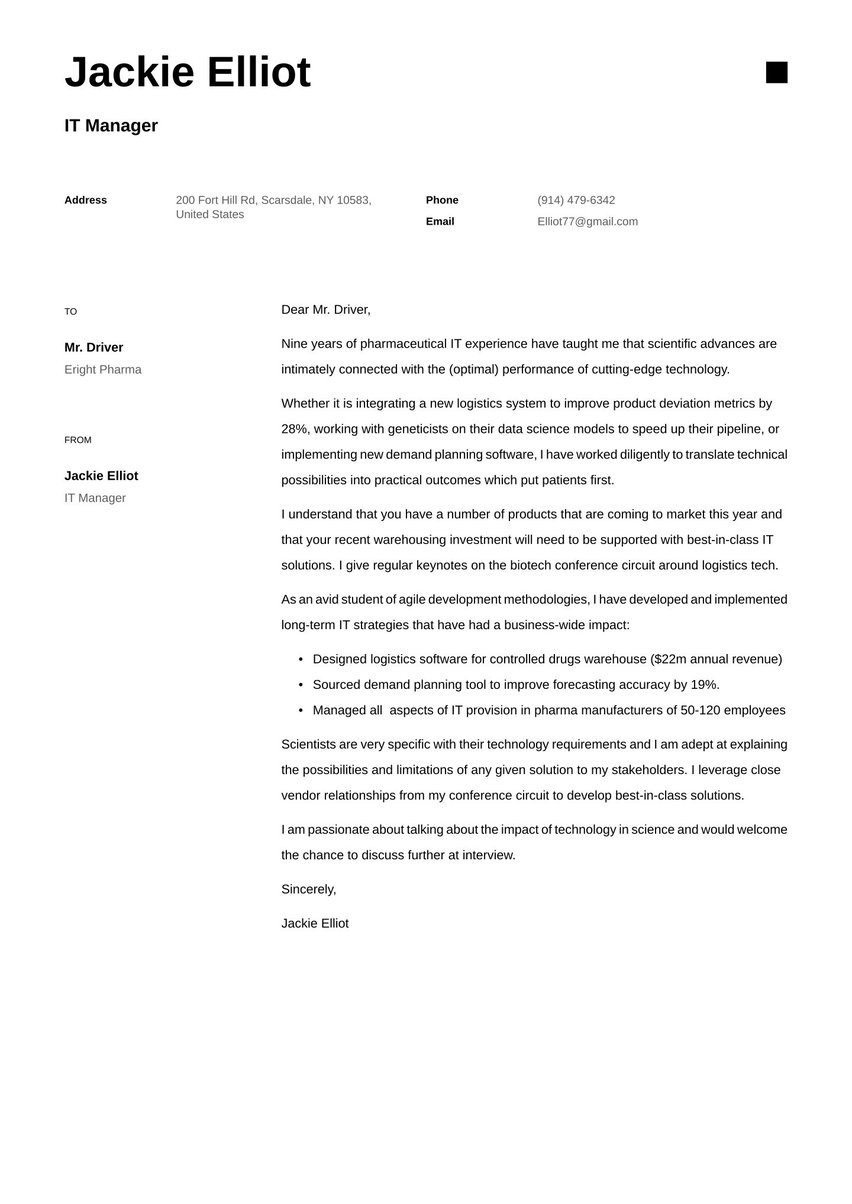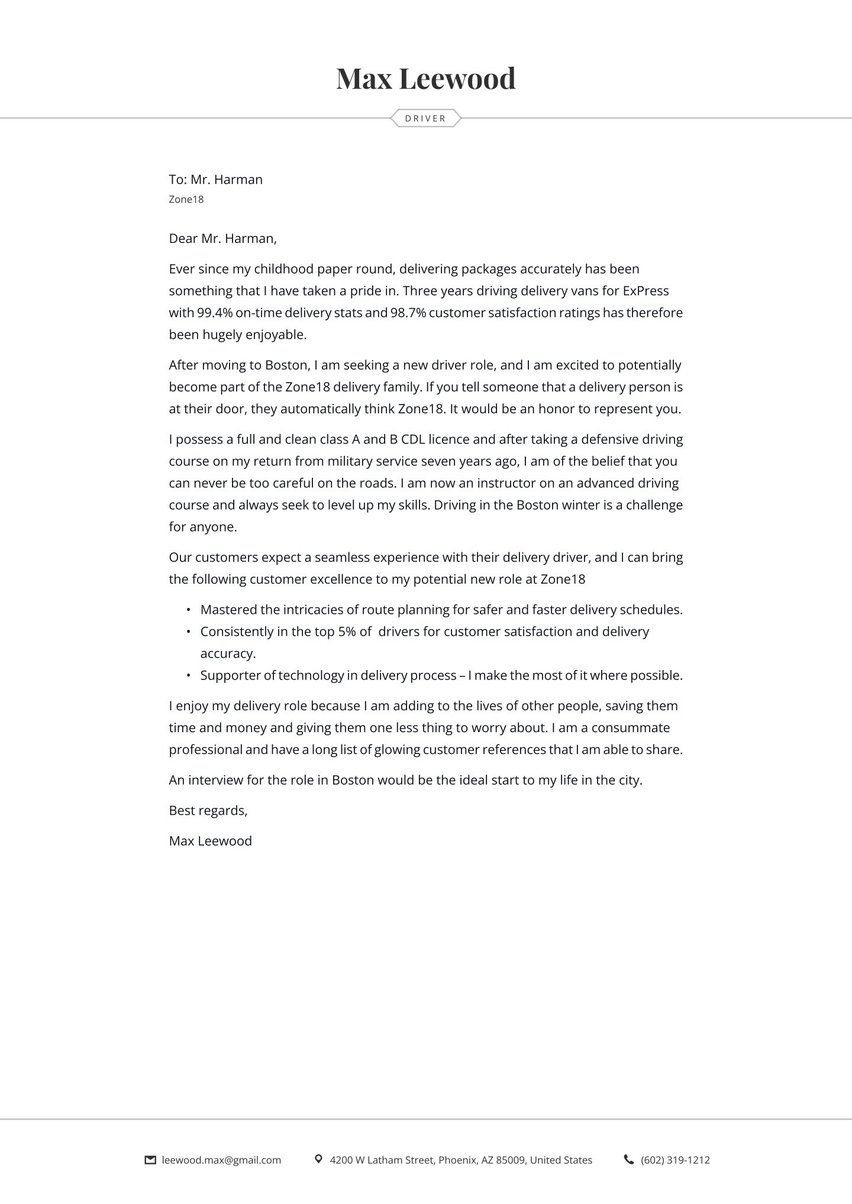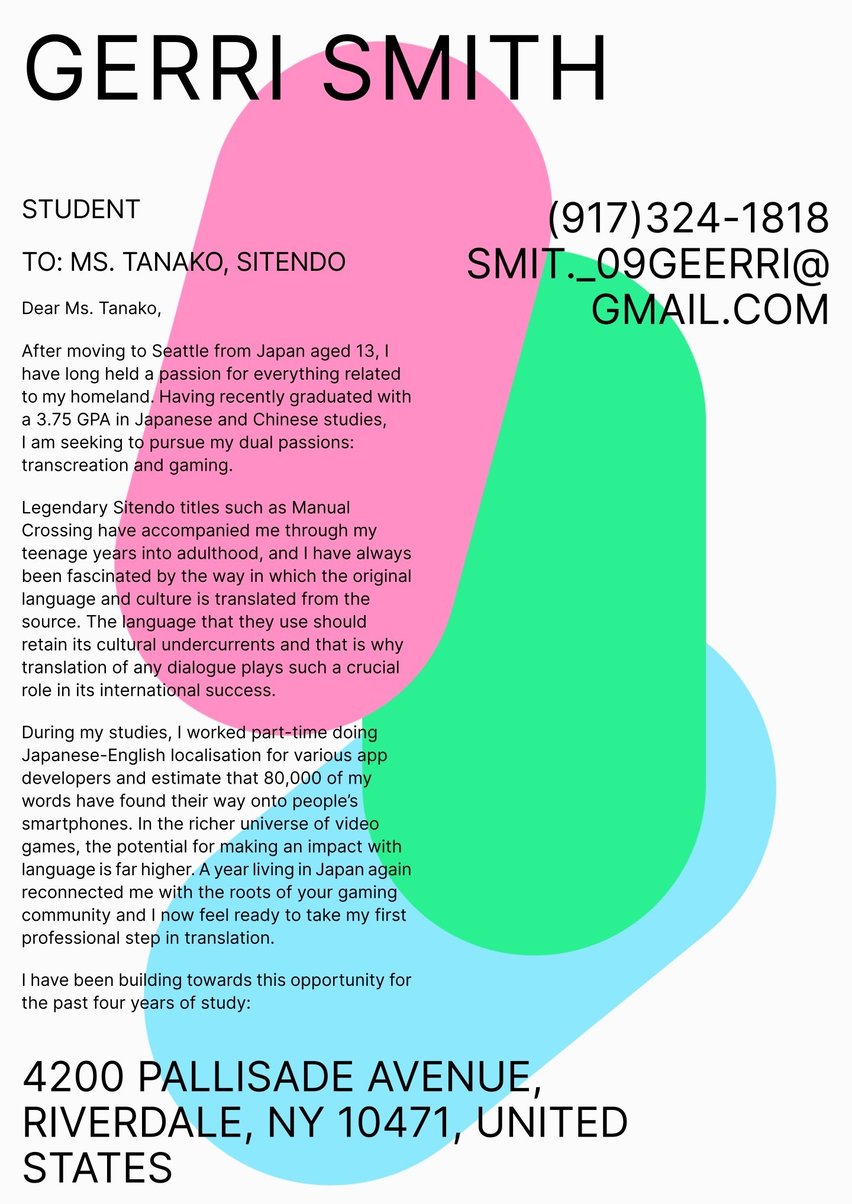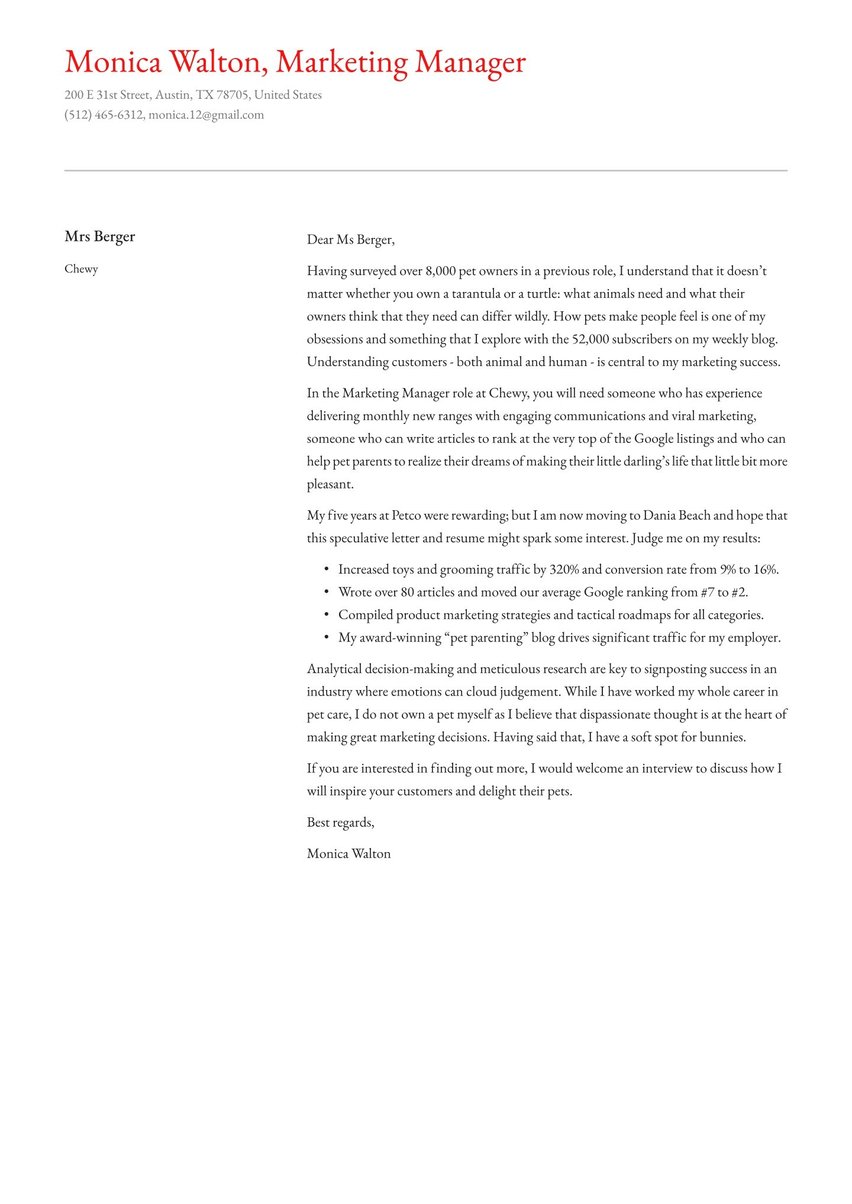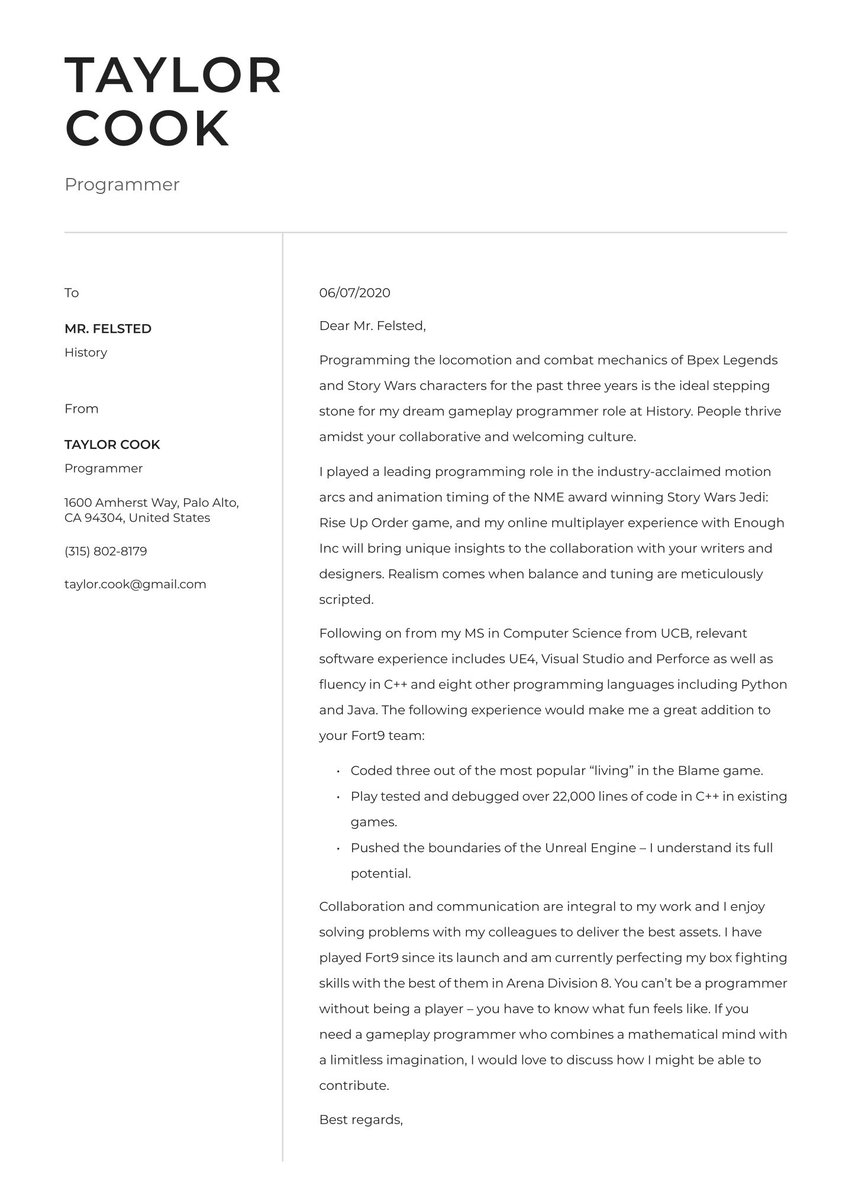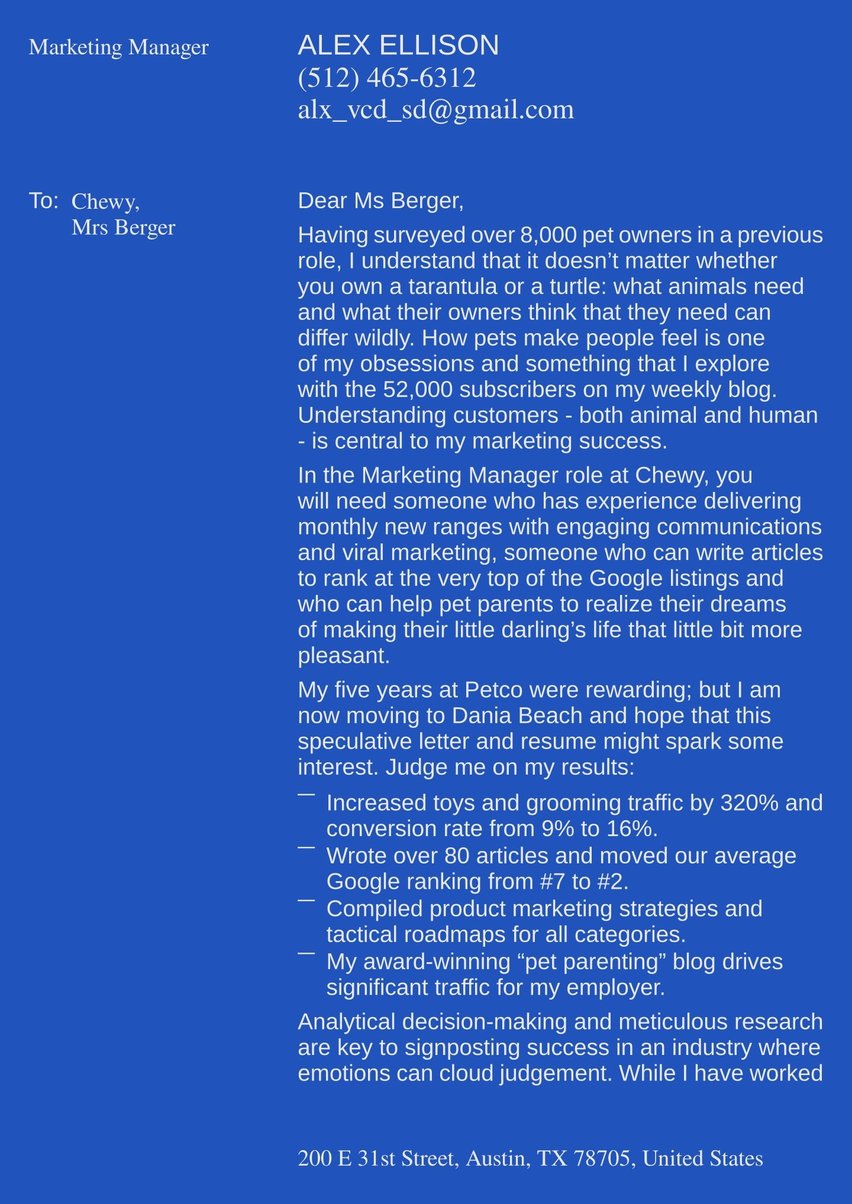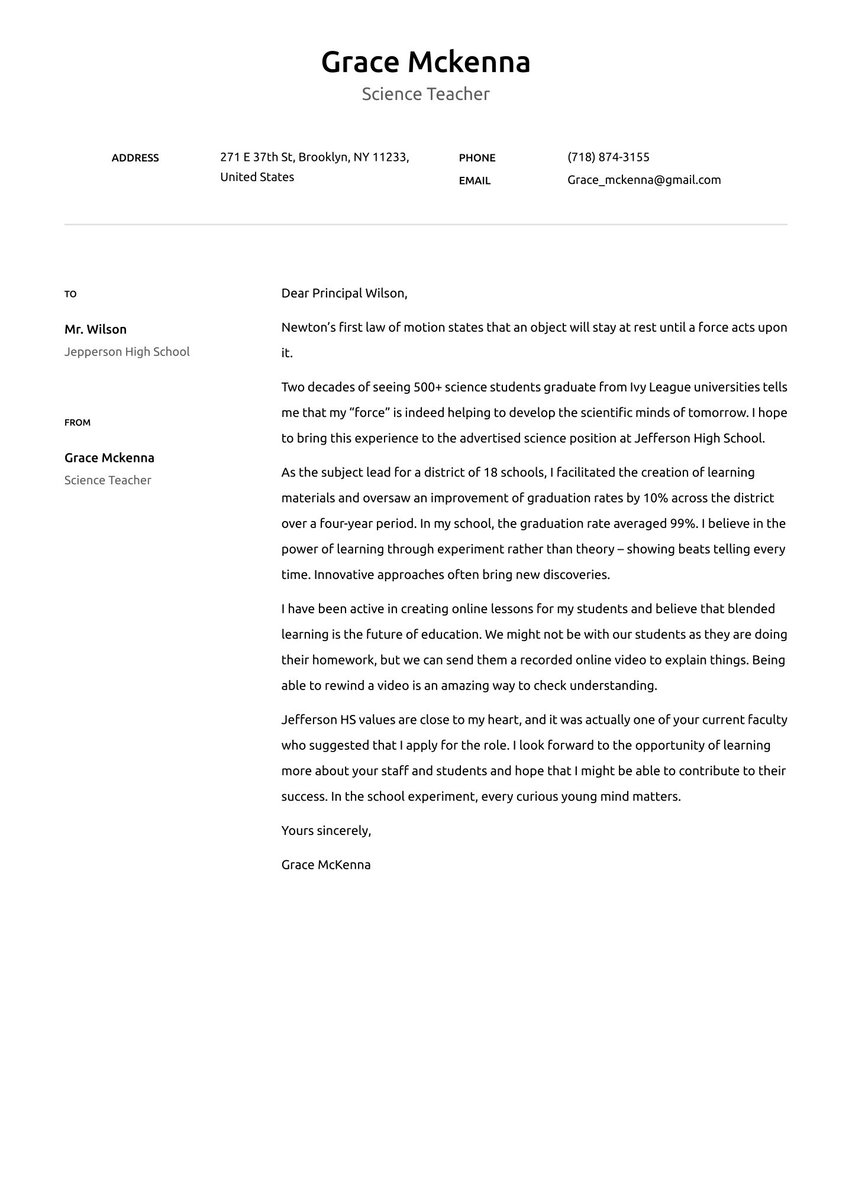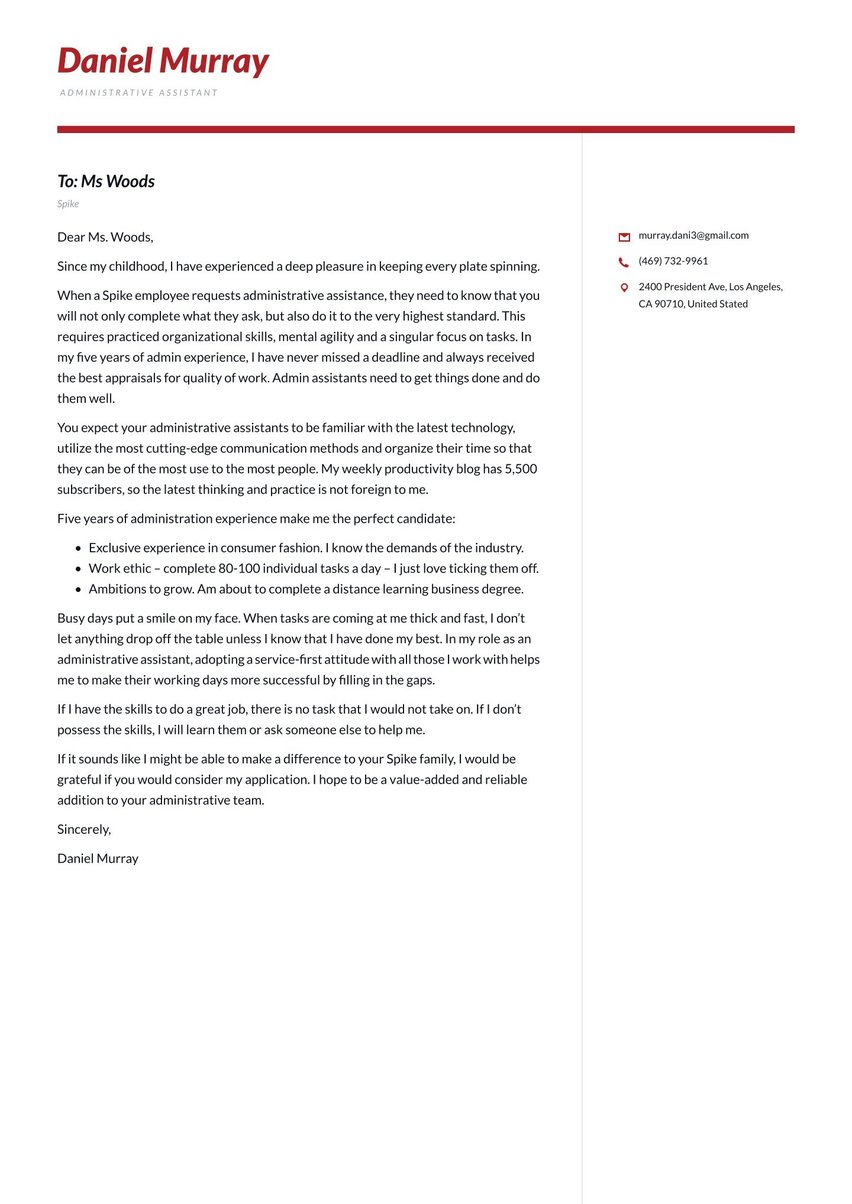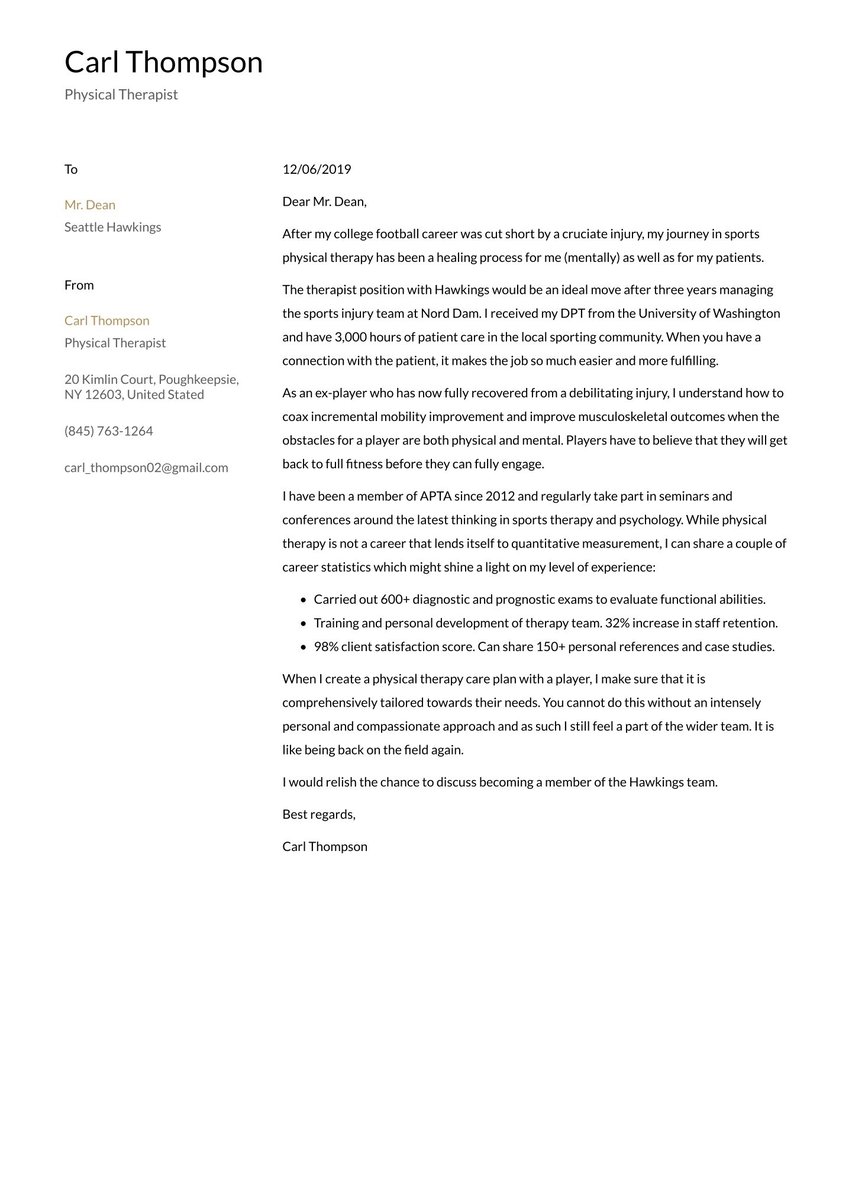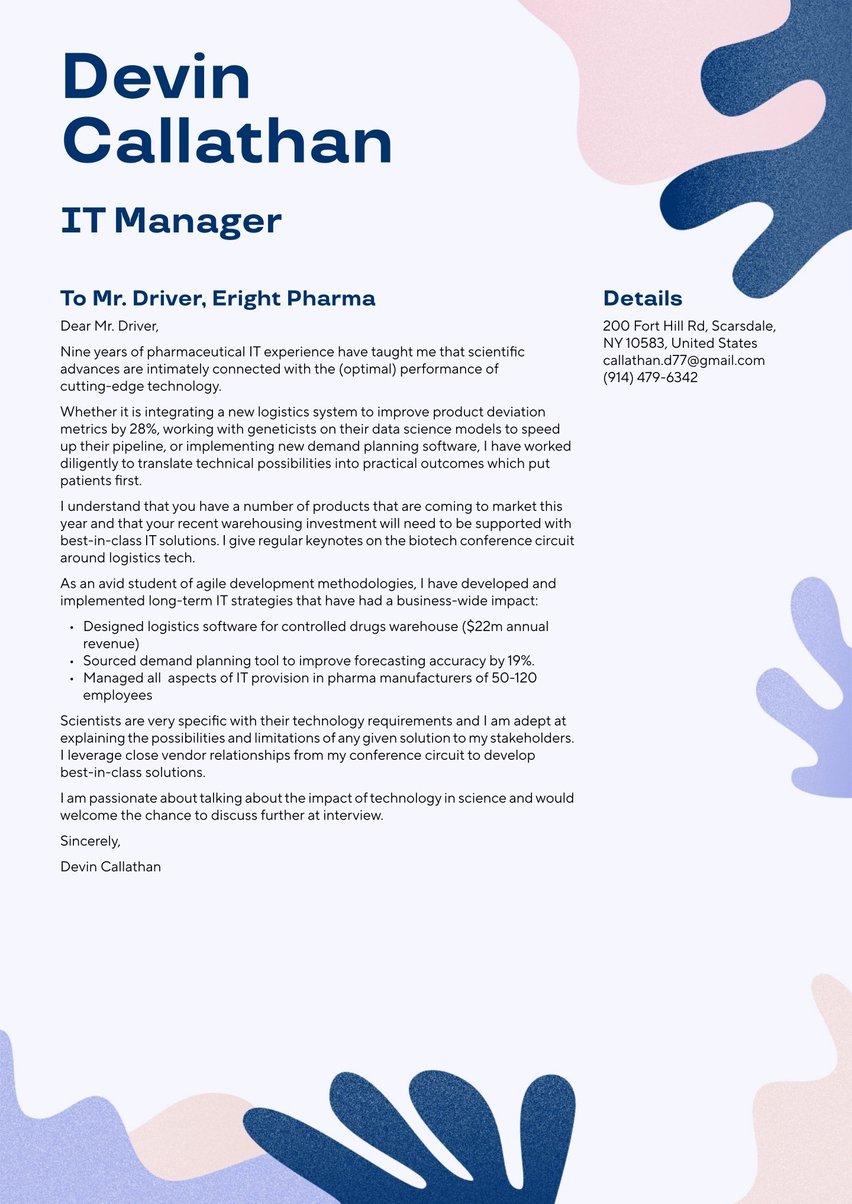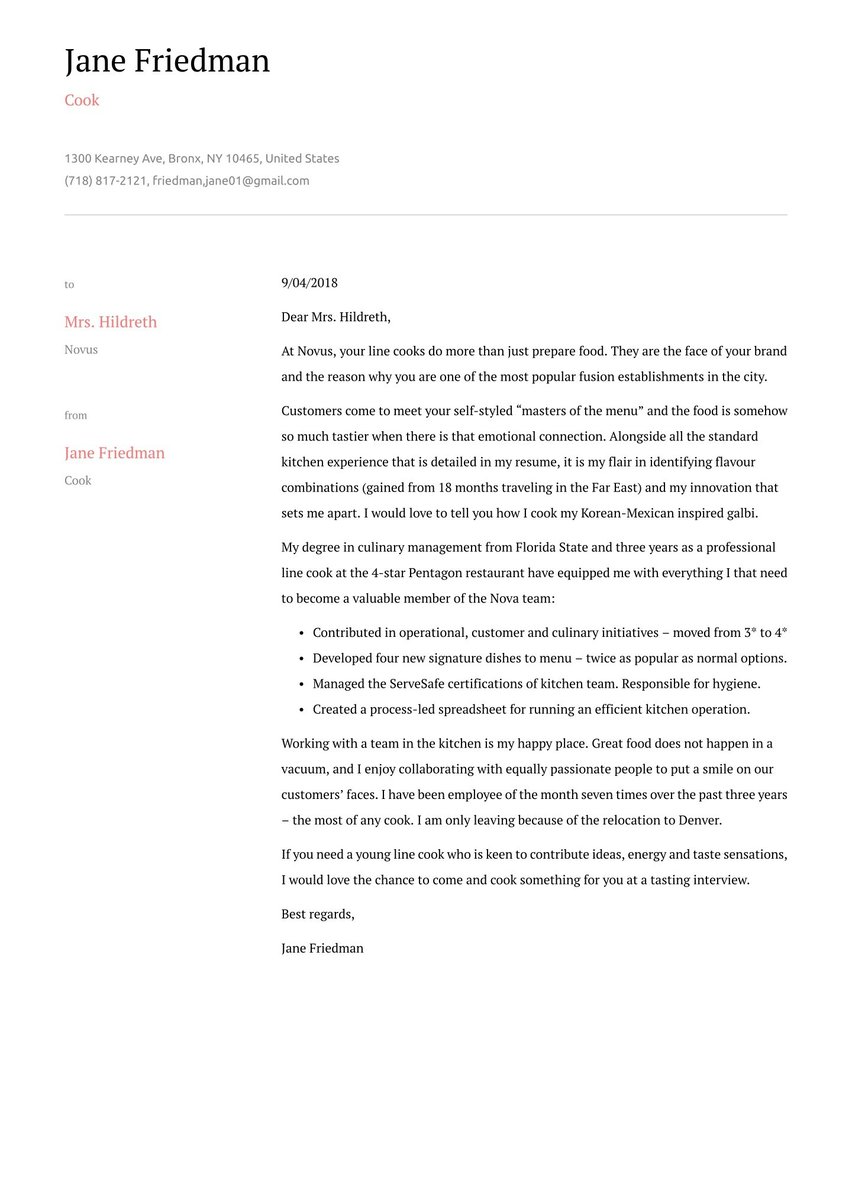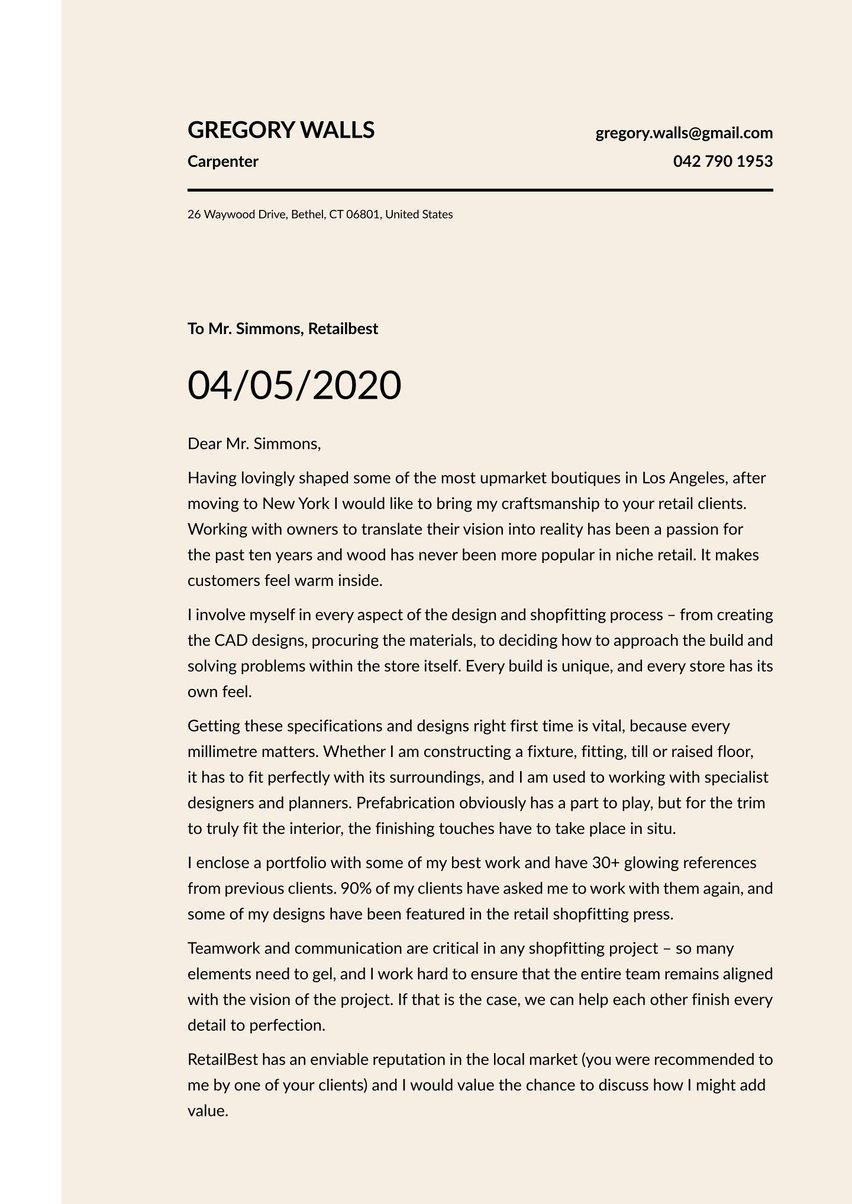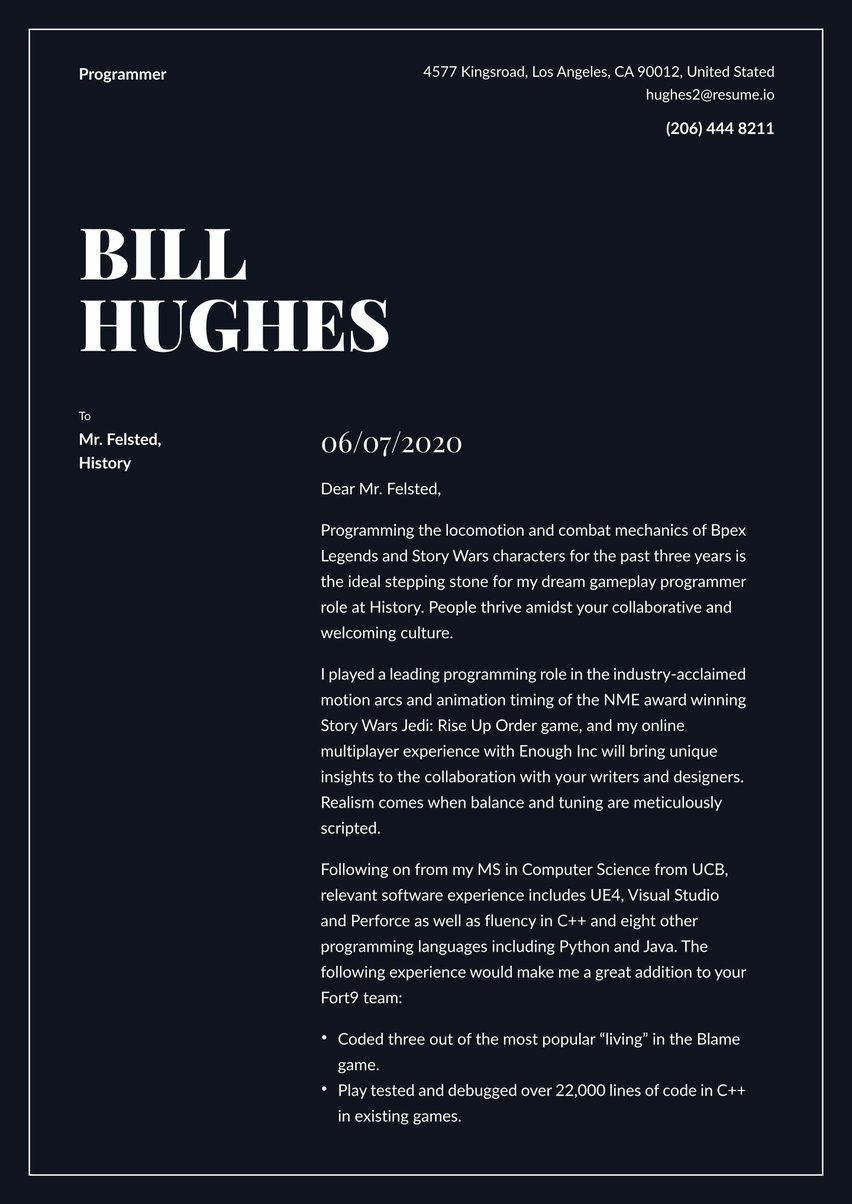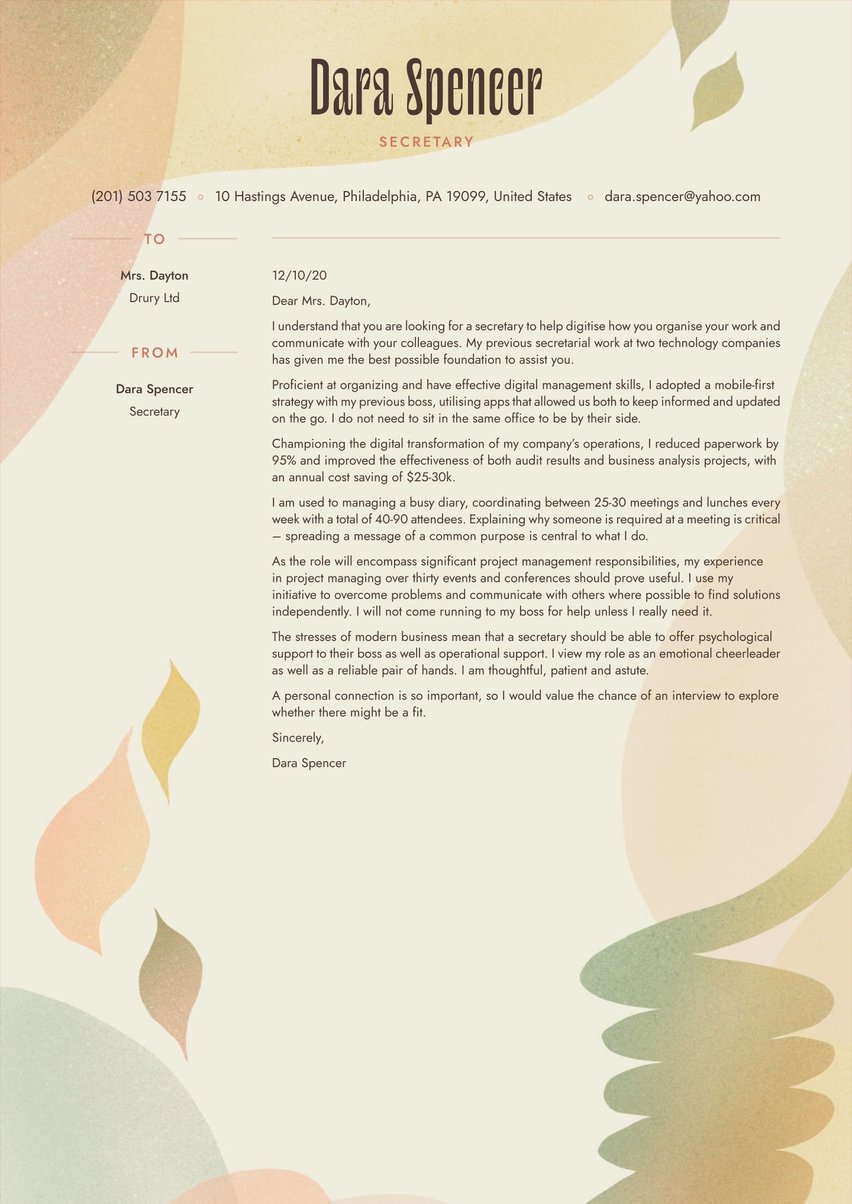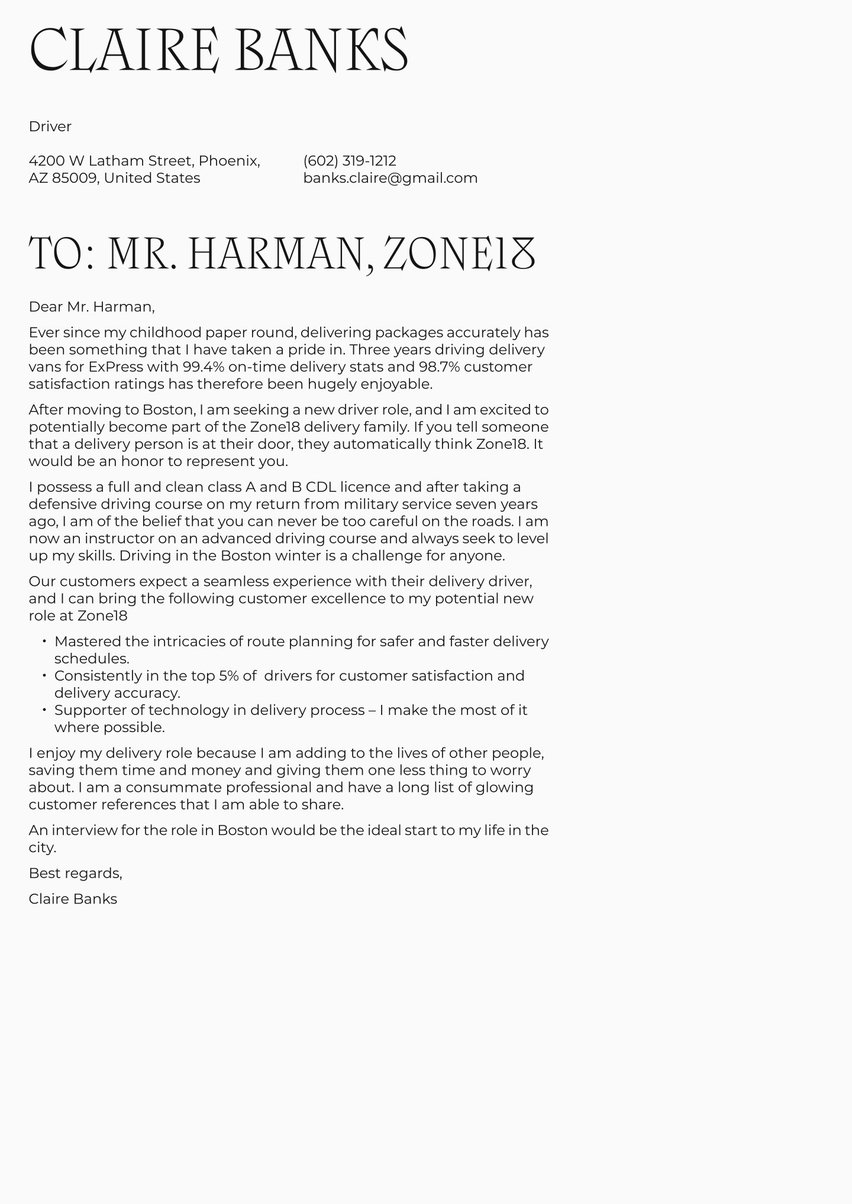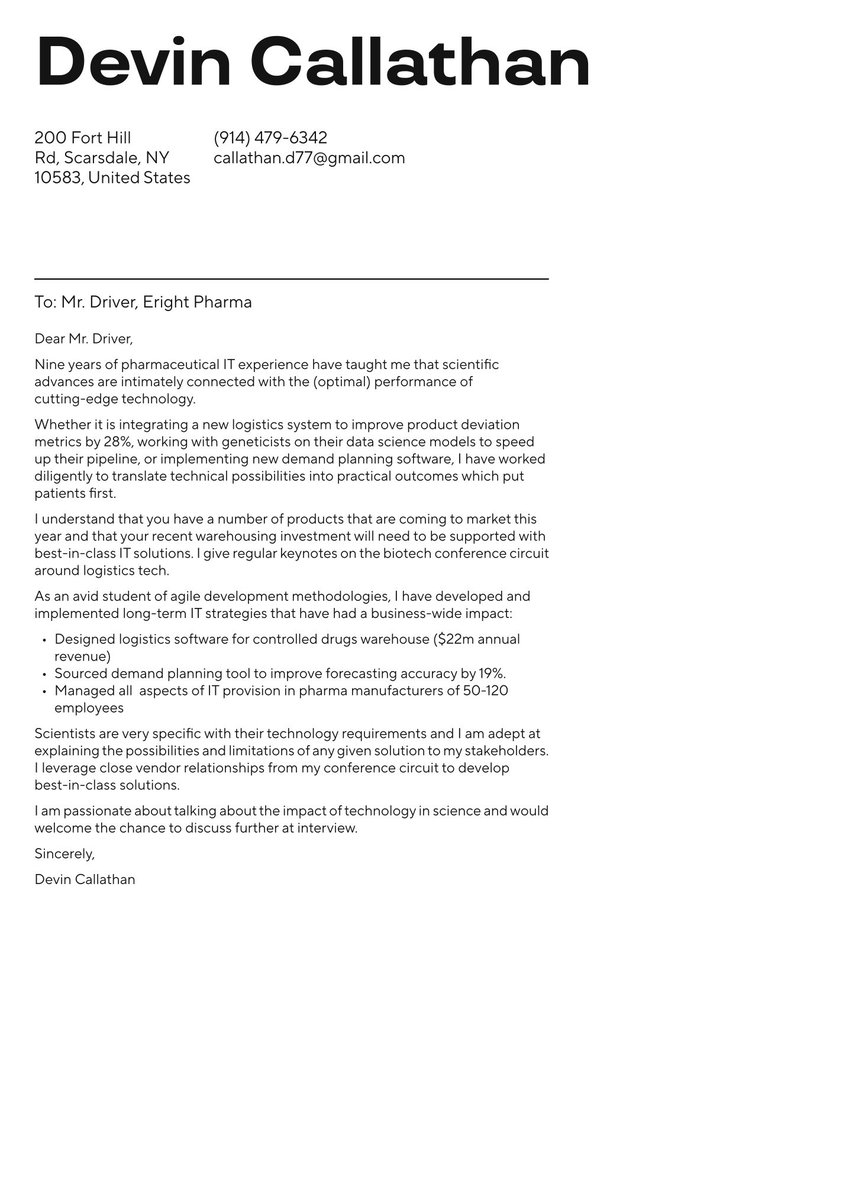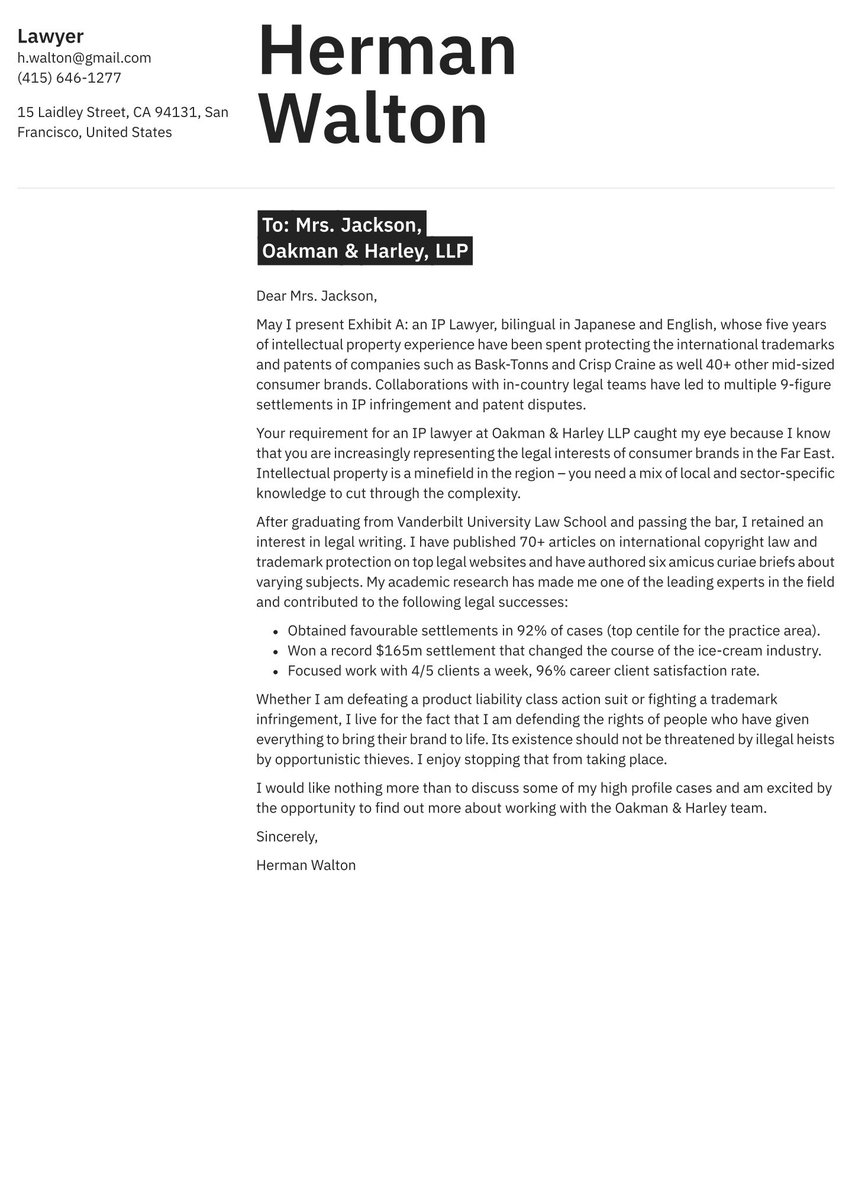If you’ve ever assisted in compiling a detailed legal brief, it may be a relief to know that each of the two documents you need to apply for a job as a legal assistant fits on a single page. And it’s vitally important that you do submit both documents — an outstanding legal assistant cover letter belongs with your resume as a package deal.
For expert advice and support with every cover letter preparation step, Resume.io is the right place to turn. Our job-winning resources include a wide selection of occupation-specific writing guides and free cover letter examples. In addition, we offer formatting advice, plus field-tested templates and builder tools to help you create both resumes and cover letters.
Depending on which information source is cited, confusion exists about whether a “legal assistant” is more of a paralegal or functions more like a legal secretary.
For example, the U.S. Bureau of Labor Statistics forecasts robust 4% growth from 2022 through 2033 for “paralegals and legal assistants,” which the BLS considers to be essentially the same occupation. Yet the BLS also forecasts a 22% crash in the 2022-32 job outlook for “legal secretaries” — although many legal secretaries today call themselves legal assistants.
The BLS also says legal secretaries made a median annual salary of $48,780 in 2022, while paralegals and legal assistants made $59,200.
But whatever your job title and role, you’ll need an outstanding cover letter to accompany your resume, and this guide will tell you everything you need to know about writing one. This cover letter writing guide, along with a legal assistant cover letter example, will discuss the following:
- How to decide on the best cover letter format and which paragraphs the cover letter should include
- How to maximize that impact of each cover letter paragraph, including the header, greeting, intro, body, and conclusion
- The approach to take when writing your legal assistant cover letter
- Mistakes to avoid when writing your cover letter
So, what are the important things to think about as you write your cover letter? Read on to learn more, and don't forget about about our library of cover letter examples as well. Let’s dive in.
What is the purpose of a cover letter?
The purpose of a cover letter is to introduce yourself in a friendly, professional manner and attempt to establish a personal connection to a hiring manager. It should highlight your experience, skills and qualifications for the job, expanding on info that’s already in your resume.
Remember that a resume is an impersonal document — it’s mostly a collection of lists — that isn’t explicitly addressed to anyone. Resumes don’t contain the words “you” or “I,” and usually don’t include even one complete sentence. That means it's difficult to get personal with a resume.
However, getting a bit personal with the hiring manager can improve your prospects of landing an interview. A cover letter also gives you an opportunity to showcase your personality, your likability, and your passion for your job.
There are a few employers out there that prefer to receive a resume only, and you’ll have to comply with their wishes. But in most cases, a cover letter is expected to accompany a resume, so you’re starting at a distinct disadvantage if you don’t send one. You don’t want to leave employers wondering why you skipped this vital step.
Another consideration: As a legal assistant, writing (or at least typing) letters may be a major part of your job. Your cover letter should demonstrate that you are fully capable of drafting a well-written, attractively designed, properly formatted letter. Persuasive writing will improve your chances too. Our cover letter builder helps with that via pre-generated recruiter-tested phrases to combat writer’s block.
Unless you’re specifically asked not to, always include a cover letter with a job application. Don’t throw away that free increase in hiring chances.
Best format for a legal assistant cover letter
A cover letter should be one page only, a maximum of 400 words, so you’ll have to make those words count. Here’s how your letter should be structured:
- The cover letter header
- The cover letter greeting or salutation
- The introduction
- The letter body (the middle paragraphs of your letter)
- The conclusion or call to action
- The signature / cover letter sign-off.
Take a look at an example cover letter below, and then let’s look at what each of these sections should contain.
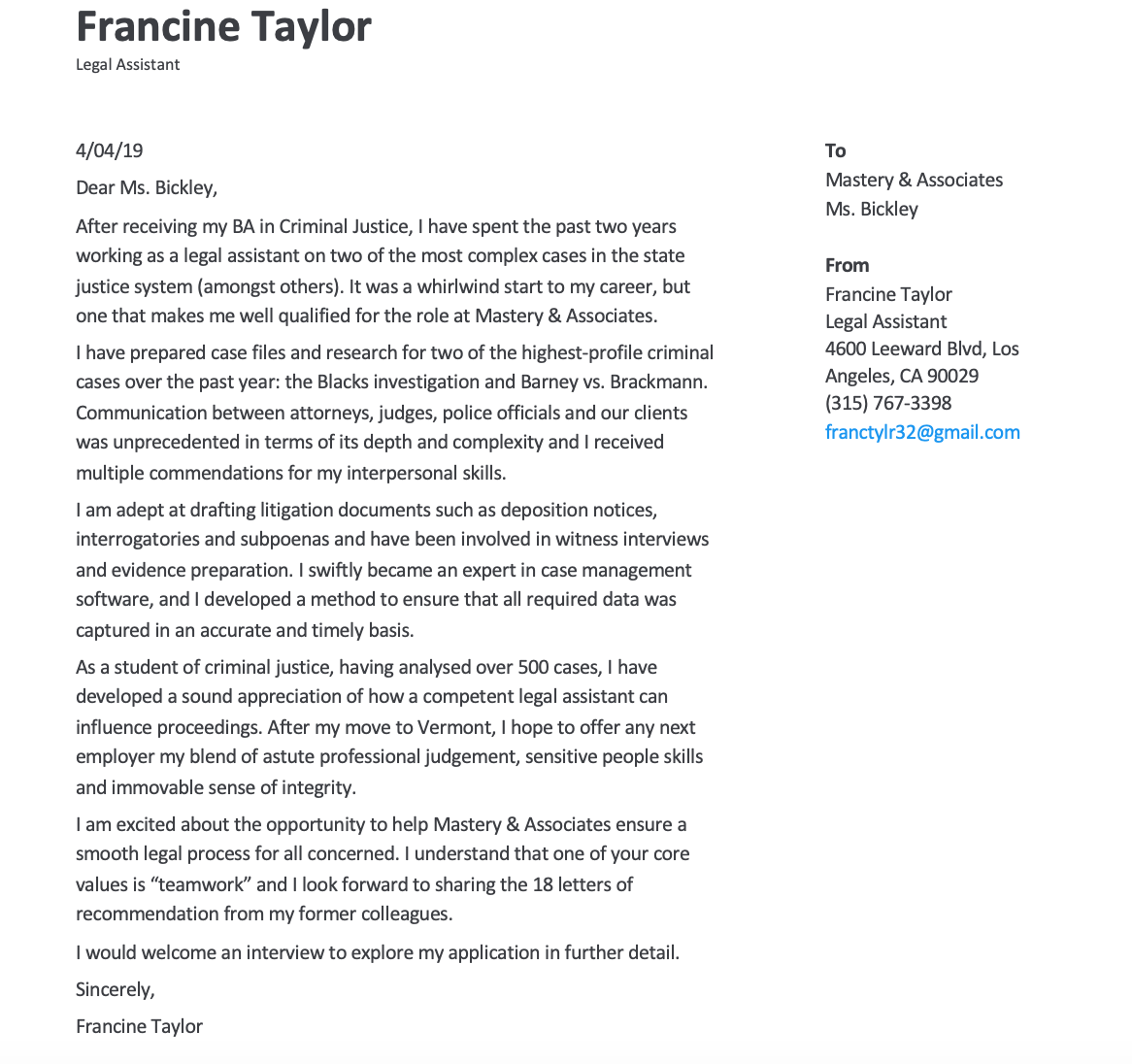
Cover letter header
The cover letter header is the space at the top of the page that contains your personal contact info: name, occupation, address, phone and email.
Sometimes the snail mail address is omitted, though it’s probably best to include one unless there’s a reason not to.
In addition to the header’s obvious purpose — so any employer will know how to reach you — it’s also an important design element on the page. You have some flexibility in the header to use a little color and be a bit creative with typography and layout. The header should also include an appropriate amount of white space.
Look through the free cover letter templates at resume.io to get an idea of some of the header options you can choose from.
Align document styles
It’s important for your resume and cover letter to have a similar look, so you want to use the same fonts, font sizes and formatting styles. The headers on both of them should be very similar, if not identical.
Aligned styles give you a “visual brand” and demonstrate your attention to detail.
This alignment of styles makes it obvious at a glance that these documents came from the same person and suggests that they were prepared to go together. They’re more memorable and harder to lose when travelling from manager to manager in a big organization.
If the styles in the two are totally different, it may look like you’ve written a new cover letter but pulled an old resume out of your files without bothering to update it.
The goal of a cover letter header is to use a visually branded design element that distinguishes you from other job applicants and shows your regard for detail and high quality.
Cover letter greeting
“Dear Mr. (or Ms.) [Last Name]” is usually all you need in your greeting, also known as a salutation, so there’s no need to overthink it.
Some people prefer a more casual “Greetings” or “Hello,” followed by a last name or first name, but beware of being too informal. Law firms tend to have a buttoned-down, formal style, and it’s best to stick to the style and tone of the company you’re targeting.
It is important to try to address your letter to a named individual — whoever is in charge of hiring. It shows respect and demonstrates your attention to detail if you’ve bothered to find out that person’s name. If it isn’t easy to determine the appropriate person, it may be a good idea to research and find out (though be careful to respect an organization’s or manager’s boundaries; don’t be too persistent).
In some cases, hiring managers prefer to remain anonymous, leaving you no choice but to use a generic salutation like “Dear [Law Firm Name] Hiring Team”.
The goal of a cover letter greeting is to start off on a friendly but professional note by making a direct personal connection with the employer.
Dear Ms. Bickley,
Cover letter introduction
The first paragraph of your letter should make a compelling and non-cliched pitch, hitting the right notes and using the right tone. You should introduce yourself, identify the job you’re seeking, and highlight the foremost reason(s) you’re qualified.
You want to get readers’ attention from the start, giving them no excuse to stop reading. Your intro should use lively language, never bland clichés or meaningless “fluff.”
The goal of the cover letter introduction is to intrigue hiring managers with an attention-grabbing preview of your qualifications that motivates them to read more.
After receiving my BA in Criminal Justice, I have spent the past two years working as a legal assistant on two of the most complex cases in the state justice system (amongst others). It was a whirlwind start to my career, but one that makes me well qualified for the role at Mastery & Associates.
Cover letter middle part (body)
The middle paragraphs of cover letters contain the “meat and potatoes” of your pitch. Here, you must make a convincing case that you are the right person for the job.
Work experience is key, so review the relevant jobs you’ve held in the past. Don’t just say where you worked or for how long, but be specific about your major accomplishments at those jobs.
Use facts and figures where possible to quantify your achievements, and use anecdotes to describe how you faced and overcame specific challenges.
The goal of the cover letter body is to make a convincing case for being hired by highlighting your most relevant accomplishments in a relatable way.
I have prepared case files and research for two of the highest-profile criminal cases over the past year: the Blacks investigation and Barney vs. Brackmann. Communication between attorneys, judges, police officials and our clients was unprecedented in terms of its depth and complexity and I received multiple commendations for my interpersonal skills.
I am adept at drafting litigation documents such as deposition notices, interrogatories and subpoenas and have been involved in witness interviews and evidence preparation. I swiftly became an expert in case management software, and I developed a method to ensure that all required data was captured in an accurate and timely basis.
As a student of criminal justice, having analysed over 500 cases, I have developed a sound appreciation of how a competent legal assistant can influence proceedings. After my move to Vermont, I hope to offer any next employer my blend of astute professional judgement, sensitive people skills and immovable sense of integrity.
If you have a relevant university degree, certifications in the field, or any special skills, you can also mention them in the body of your letter.
Additionally, if you’re aware of any special needs or challenges your prospective employer faces, you may wish to describe how you can help address them. If you can say anything specific about the firm you’re targeting, that can be a helpful way of proving that this isn’t a generic letter that you’re sending to 50 other law firms.
How to close a legal assistant cover letter (conclusion and sign-off)
You might close with a brief summary of your qualifications and perhaps a thank you for the recruiter’s time. You should also issue some kind of call to action, typically by suggesting that you are eager to hear back about setting up an interview.
Close with a “Sincerely,” “Cordially,” “All my best,” or the equivalent, and type your name. If sending this letter electronically, you may wish to add your actual scanned signature.
The goal of the cover letter conclusion and sign-off is to end on a positive, self-assured note with a call to action that shows your eagerness to interview for the role.
I am excited about the opportunity to help Mastery & Associates ensure a smooth legal process for all concerned. I understand that one of your core values is “teamwork” and I look forward to sharing the 18 letters of recommendation from my former colleagues.
I would welcome an interview to explore my application in further detail.
Sincerely,
Francine Taylor
The psychology of writing a persuasive cover letter
You’ll see advice in our resume guides that you have to pass the screening test of applicant tracking systems (ATS) software — essentially, optimizing your application to include keywords that computer bots will be looking for.
And while that’s an important consideration, never forget that you’re writing your letter to a human being. So you should write like a human being too, and not like a robot.
A cover letter is a business letter, but that doesn’t mean it should be totally impersonal. Remember, one of the main goals of a cover letter is to establish a personal connection with someone whose help you need.
Psychologists say human beings make many decisions on an intuitive, emotional level, not necessarily employing pure reason on a cognitive level. In other words, people react with their hearts as well as their heads. Usually it’s best to appeal somehow to both emotion and reason.
Consider your tone carefully. Study the company you’re targeting, and look at how formal or casual it is in addressing the public on its website or in other communications. You should endeavor to match that tone. Google research and social media research do wonders for understanding a company’s tone and corporate culture.
Also consider your position relative to the person you’re writing to. A candidate for CEO might write a letter differently, but a legal assistant seeking a support position can never afford to be arrogant or presumptuous. Confidence is great, but overconfidence is not.
Put yourself in the shoes of the hiring manager and try to read your letter through that person’s eyes. If you received this letter, would you want to meet the person who wrote it — and possibly work with them for years to come?
Remember that a cover letter should always be about how you can help the company, not how the company can help you.
Legal assistant cover letter with no experience
Becoming a legal assistant without experience may be challenging, but there are ways to structure your cover letter to put your best foot forward.
There are a few things you can mention in your cover letter to increase your chances of getting hired:
- Your interest in and passion for the law
- Any relevant legal education, training, or certifications
- Your organizational and/or administrative skills from other fields
- Strong analytical skills and ability to communicate.
A cover letter is a great place to make up for gaps in your resume by speaking directly to the qualities that will make you a great addition to the organization.
Basic mistakes in a legal assistant application letter (and how to avoid them)
Here are some common mistakes people make in writing cover letters:
- Typos, misspellings, grammatical errors, and other writing mistakes can automatically sink your ship. Remember that your cover letter is, in part, a demonstration of important job-related skills.
- Copy/paste letters that are not customized for a specific employer are easy to spot. Every cover letter should be written for a unique recipient.
- Clichés, HR-speak, and “fluff” — fancy language that doesn’t say anything — are always a turnoff. Write in fresh, original language, avoiding phrases that hiring managers have seen dozens of times before.
- Irrelevant info about your hobbies or interests that don’t illustrate what makes you a good legal assistant should be left out.
- Bad formatting and design, strange fonts or unusual file types can all be disqualifiers.
Key takeaways
- You need the electronic equivalent of just two pieces of paper — a resume and a cover letter — to get a job as a legal assistant, so you need to avoid errors and make every word count.
- Cover letters are a critical tool for establishing a personal connection to a hiring manager, as well as showcasing your personality and passion. You should always include a cover letter with a resume unless you’re specifically asked not to.
- Follow proper cover letter structure to make sure you’ve included everything you need to and nothing you don’t.
- Follow proper cover letter formatting and design to make sure your letter looks as good as it reads.
- Write a persuasive letter by putting yourself in the shoes of the hiring manager and sending the letter they would be hoping to receive.
- Avoid deal-breaking mistakes in writing, format, and design.
With Resume.io, writing your cover letter is simple. Just click on one of our ready-made, market-researched cover letter templates and start writing. If you’re looking for additional inspiration for cover letter writing, you can check out our related legal and assistant cover letter examples:


